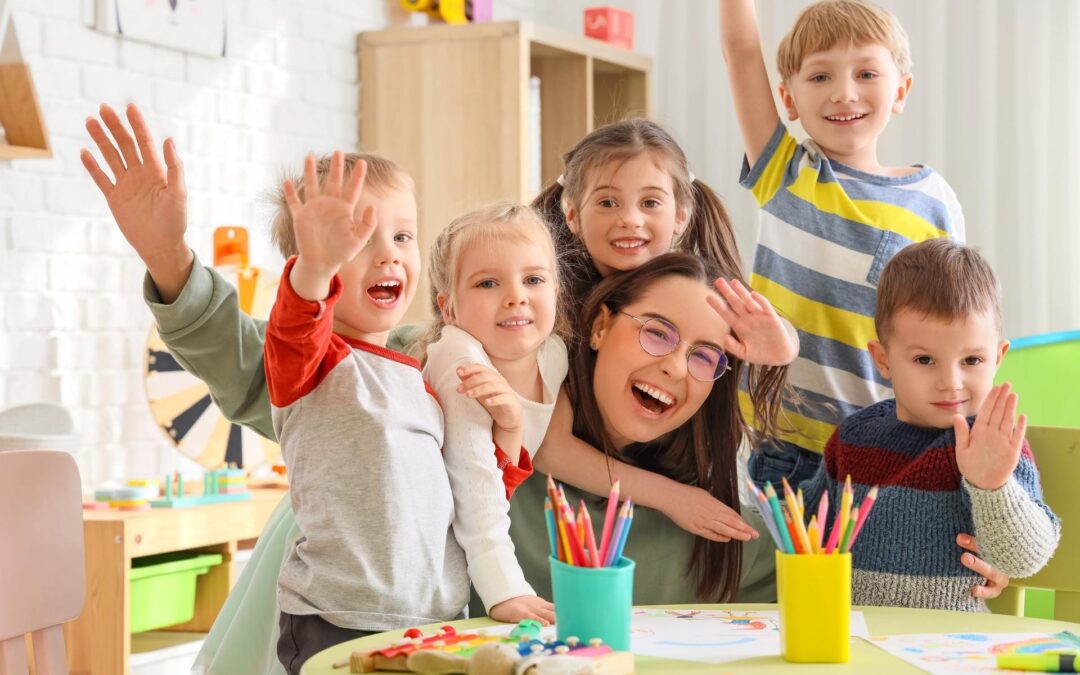The day your child starts Kindergarten is one of those milestone moments that sits like a bookmark in your parenting journey. You’ve likely been preparing for this for months—buying supplies, labeling tiny backpacks, and reassuring your child (and yourself) that this is an exciting new chapter. Still, nothing quite prepares you for the emotional rollercoaster of that first dropoff.
Whether it’s your first child or your fourth, sending them off into the big world of school can stir up a mix of pride, sadness, anxiety, and even guilt. For many families, Kindergarten represents a major shift—not just for the child, but for the entire household.
The Emotional Tug-of-War
The morning your child starts Kindergarten, you might notice a lot of “firsts.” First time putting on a uniform or carrying a lunchbox. First time navigating a classroom independently. First time saying goodbye to you in a new, unfamiliar place.
For kids, these firsts are big. While some may walk confidently through the school doors, others may cling to you, tears in their eyes, asking why they can’t just stay home. Both responses are valid—and normal.
As parents, the emotions can be just as overwhelming. There’s pride in seeing your child grow, but also sadness in realizing how fast that growth is happening. There may be anxiety over whether they’ll make friends, keep up academically, or feel safe and seen by their teacher. And underneath it all is a low hum of grief as you realize your toddler has truly grown into a “big kid.”
Common Adjustment Struggles
For kids, the struggles often center around:
- Separation anxiety: Crying at drop-off, reluctance to go to school, or expressing stomachaches or headaches as a way to avoid going.
- Sensory overload: The noise, crowd, new routines, and expectations can be overwhelming, especially for sensitive kids.
- Fatigue: Full-day Kindergarten is a big shift, and many children are exhausted by midweek.
- Social-emotional challenges: Learning to share, take turns, express feelings appropriately, and resolve conflicts with peers.
For parents, the challenges may include:
- Guilt: Wondering if your child is really ready or if you’ve prepared them “enough.”
- Anxiety: About safety, bullying, or academic pressures.
- Loneliness: Missing your child’s company or struggling with the quiet at home.
- Letting go: Trusting someone else to guide, teach, and care for your child for several hours each day.
Therapeutic Tools for a Smoother Transition
Thankfully, there are gentle, supportive strategies to help both kids and parents navigate this big life change.
1. Create Predictable Routines
Children thrive on structure. Morning and bedtime routines that stay consistent can help kids feel secure. Use visual charts if helpful—especially for neurodivergent children—to guide them through dressing, brushing teeth, packing bags, etc.
For parents, predictable routines reduce chaos, help manage time more effectively, and offer a sense of control when emotions feel heightened.
2. Use Play-Based Processing
Young children process emotions through play. Use dolls, stuffed animals, or role-playing games to act out school scenarios. For example, you might “play school” at home, taking turns being the teacher and student. This gives your child a safe space to express fears and practice responses.
3. Emotion Coaching
Validate your child’s feelings with empathy:
- “It’s okay to feel nervous. Starting something new is hard.”
- “You’re feeling sad because you miss home. That makes sense.”
Avoid dismissing their feelings (“You’ll be fine!”) or rushing to fix everything. Simply sitting with them in their discomfort and naming the emotion can go a long way.
4. Transitional Comfort Objects
If allowed, send a small item in your child’s backpack—like a note, a photo, or a tiny stuffed toy—to help them feel connected to home during the day. You could write a short “lunchbox love note” with a heart or sticker to remind them you’re thinking of them.
5. Schedule Special Connection Time
When your child gets home from school, set aside 10–15 minutes of undivided attention—no phones, no chores. Let them lead the activity. It can be reading, coloring, snuggling, or a quick game. This “reconnection ritual” helps regulate emotions and fosters security.
6. Check Your Own Emotions
Kids are emotional sponges. If you’re radiating anxiety, they’ll pick up on it. Journal, talk to a friend, or even see a therapist to process your own grief or nervousness around this transition. It’s okay to feel sad—it means you care deeply.
7. Practice Gratitude Together
Each night, try a “rose and thorn” reflection:
- Rose = something good about the day.
- Thorn = something hard or confusing.
- Bud = something you’re looking forward to.
This simple routine encourages emotional expression and builds resilience
Final Thoughts
Starting Kindergarten is both an ending and a beginning. It’s a goodbye to lazy weekday mornings, spontaneous adventures, and constant togetherness. But it’s also a hello—to new friendships, discovery, independence, and growth.
You’re not failing if you cry in the parking lot or peek through the school window a few extra seconds. And your child isn’t behind if they take weeks—or even months—to adjust.
Transitions take time. With patience, connection, and a few therapeutic tools, this big step forward can be a meaningful journey for your whole family. And one day, you’ll look back and marvel at just how far you’ve both come.






